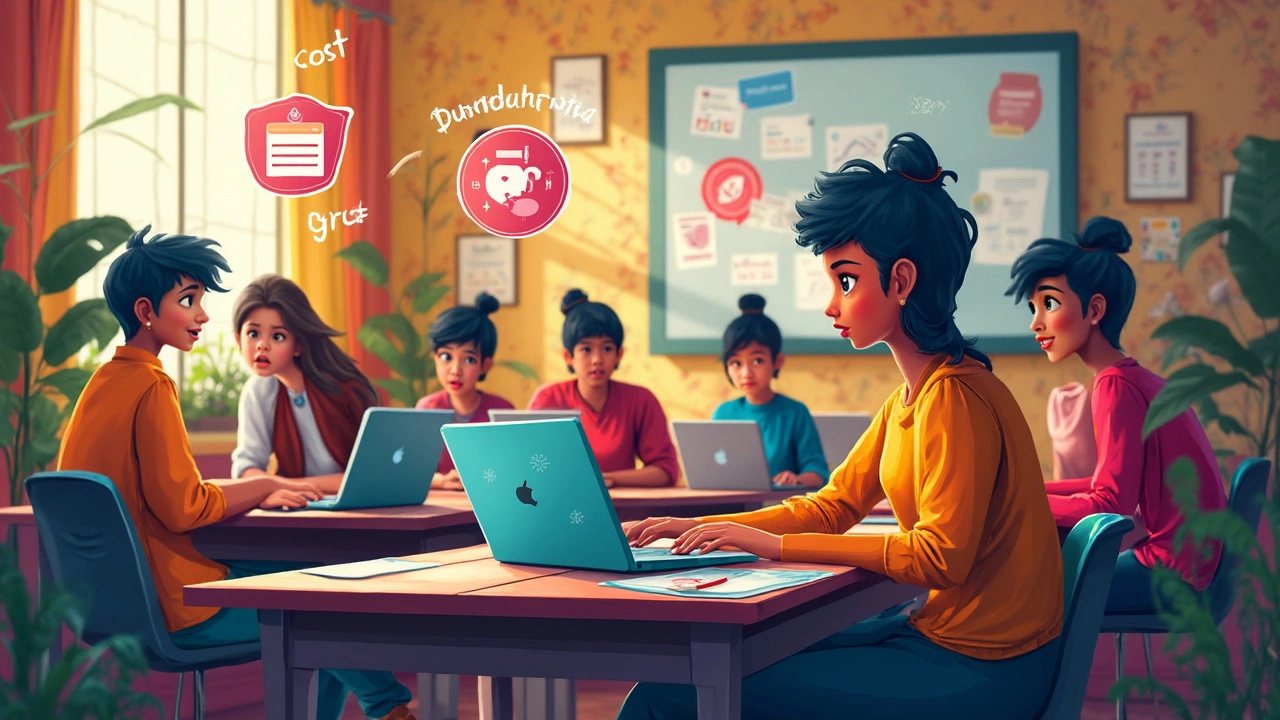Picture this: a high school biology class in Vancouver logs in on a stormy day, with half the city under a rainfall warning. The teacher posts today’s assignment, drops a short video, and opens a chat window. Some kids watch the lecture in real time, others catch up after dinner — and nobody’s chasing missed notes or crumpled handouts. What makes this possible isn’t just the internet, but something much smarter: the eLearning system powering it all behind the scenes.
What Exactly Is an eLearning System?
Think of an eLearning system like a toolbox for learning, only it lives online. At its core, it’s a digital platform built to deliver, track, and manage education. Instead of dusty blackboards or stacks of binders, everything unfolds on your screen: lectures, quizzes, resources, grades, and even teacher feedback. The most common type is called a learning management system (LMS). Names like Moodle, Canvas, Blackboard, and Google Classroom come to mind. Some are used in huge public schools, others in small private colleges, but the principle stays the same — bring education out of the classroom and onto your device.
An eLearning system goes beyond a static website. It’s interactive. Assignments are uploaded, deadlines set, tests self-graded, and multi-modal content (like video, audio, digital textbooks) all show up in one place. Instructors can personalize what each learner sees. Parents can even peek in on progress, and students can reach out for help instantly — no need to wait for the next class. The system keeps records, makes grading more transparent, and can integrate analytics, so teachers spot who might be falling behind before the test scores hit zero.
What might surprise you: eLearning systems aren’t just for schools. Corporations, public institutions, and even local governments use them. Say you’re onboarding a new hire at a software company in Vancouver. Instead of 132 pages of documentation, everything’s uploaded on the company LMS. Training videos? Check. Mini-quizzes? Check. Compliance certifications? The system tracks those and reminds you — so no one gets flustered right before an audit. That’s why big names like Shopify, the Government of Canada, and BC Hydro roll out eLearning systems for thousands of employees.
There’s a funny stat from 2024: worldwide, more than 72% of large organizations now say digital training is their main route for upskilling staff. Even before the pandemic nudged everyone online, remote learning was on a roll. But after 2020, school boards and companies scrambled to digitize old paper systems. In less than two years, over 90% of Canadian universities hosted major degree programs at least partly online. And what’s wild is that people of all ages started to realize eLearning works. That includes grandmothers learning languages and engineers working toward certifications from their kitchen tables.

Features and Functions: What Makes a Good eLearning System?
Success in eLearning isn’t just about putting PDFs on a website. So, what turns a basic online page into a powerhouse learning tool? From what I’ve seen (and what most users rate the highest), the best eLearning systems nail these features:
- Accessibility: The gold standard is any device, anytime, anywhere. Mobile compatibility isn’t optional — it’s critical. In a 2023 UBC survey, 79% of students did coursework on phones at least once a week, often from the bus or coffee shop.
- Interactive Content: Videos, discussion forums, drag-and-drop activities — all those tools keep motivation high. Gamified elements, like badges and leaderboards, help learners stick with tough modules.
- Tracking and Analytics: Teachers and admins see at a glance who’s participating, who’s struggling, and how long people spend on specific lessons. Data helps spot engagement issues before anyone fails out or drops off.
- Personalization: Modern systems let you set up learning paths, so users can progress at their own speed. Adaptive quizzes adjust question difficulty after each correct (or incorrect) answer, keeping every learner challenged but not overwhelmed.
- Security and Privacy: With rules like Canada’s PIPEDA and Europe’s GDPR, a platform needs airtight data protection. Look for two-factor authentication, encrypted connections, and clear privacy policies. You never want student essays ending up on the open internet.
- Support and Communication: Live chat, instant messaging, video calls — everything should work inside the eLearning system. Question about a calculus problem at midnight? The best platforms offer lively peer-to-peer forums or 24/7 AI tutors who can walk you through a tricky step.
There’s one more thing nobody talks about, but I think it’s huge: usability. If it takes six clicks and a secret code just to find next week’s homework, everyone gets frustrated. Well-designed systems show you exactly where to go. Course icons are labeled. Deadlines jump out in clear calendars. Files are easy to upload, and feedback shows up where you expect it. Studies from the University of Toronto found students are 50% more likely to participate in online discussions if everything’s intuitive, with minimal hurdles to get started.
You also find integrations with tools people already use. Sync with Google Drive? Push notifications to Slack? Attach YouTube videos or create polls in Microsoft Teams? The goal is to meet learners where they are — making the transition from "real" world to "digital" as seamless as possible. That bit is especially handy in workplaces, where training shouldn’t disrupt real business flow.
One quirky trend I’ve noticed in the last year: artificial intelligence. Not in the dystopian way, but smart systems that recommend revision material if a student flubs a quiz or that flag unusual exam behavior for integrity checks. While it’s not perfect (and sometimes sets off false alarms — cue the angry emails), machine learning adds a safety net against cheating, burnout, and even unnoticed stress.

Getting the Most from Your eLearning System
All this power sounds great, but here’s the critical bit — what makes eLearning systems genuinely effective? A slick platform is wasted if people don’t buy in or don’t know how to use it. Here are a few nitty-gritty tips I’ve picked up from Vancouver teachers, HR pros, and even a couple of students who figured out how to outsmart the system (ethically, of course):
- Start with training, not just for students, but for instructors too. I’ve seen teachers who are lost after uploading a syllabus, and managers who think all digital modules are "set it and forget it." Short, hands-on onboarding prevents so much confusion down the road.
- Set clear rules for communication. Is the discussion board for assignments only, or can people post memes, too? Should you DM the instructor for every tiny question, or wait for group office hours? Laying down some ground rules cuts back on drama and delays.
- Make feedback a two-way street. The best instructors use built-in anonymous surveys or rating tools to tweak courses constantly. If a quiz is broken or a lesson’s unclear, students should feel free to say so without backlash.
- Encourage participation beyond grades. In a study run by SFU last year, participation doubled when forums were used to discuss real-life scenarios, not just dry textbook prompts. A little creative freedom helps people connect and remember more.
- Leverage analytics, but don’t rely on them alone. Sure, the LMS might ping you when someone is way behind, but there’s no replacement for a simple "How’s it going?" Sometimes a check-in does more than a chart ever could.
- Keep adapting. The tech world doesn’t stand still — your eLearning setup shouldn’t either. Every big system offers regular updates. Assign someone to review what’s new each semester, and be willing to test features with small groups before rolling out major changes.
Here’s one last reality check: eLearning systems aren’t perfect, and they won’t magically erase every challenge in education or corporate training. Access to devices, stable internet connections, and user motivation still cause real headaches. But the right platform closes gaps in a way textbooks never could. You can record lessons for somebody who missed class, or adjust content for those learning English as a second language. And for millions stuck at home (think wildfire smoke in BC or winter storms in the Maritimes), the system keeps learning, working, and growing, no matter what’s happening out the window.
So next time you click that "Join Class" button and roll your eyes at another digital worksheet, just remember: you’re part of a wild shift that’s changing not just how we learn but what’s possible, wherever you sit down to log in. And for folks who can remember chalk dust on their jeans, it’s a pretty big upgrade.



